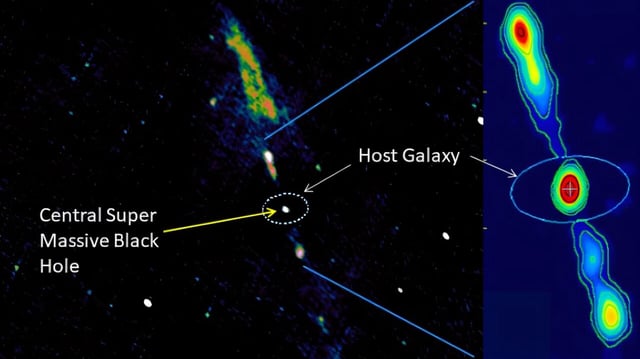Overview
- J23453268−0449256, nearly 1 billion light-years away, hosts a supermassive black hole with radio jets stretching 6 million light-years, among the largest observed in a spiral galaxy.
- The discovery challenges the belief that such extreme jets disrupt the structure of spiral galaxies, as J23453268−0449256 retains its well-defined spiral arms and stellar ring.
- The galaxy contains 10 times more dark matter than the Milky Way, providing stability to its fast-spinning disk under intense conditions.
- The findings suggest the Milky Way's central black hole, Sagittarius A*, could potentially become active in the future, posing risks to Earth's habitability through radiation exposure.
- This study highlights the interplay between dark matter, black hole activity, and galactic structure, offering new insights into cosmic forces and galaxy evolution.
